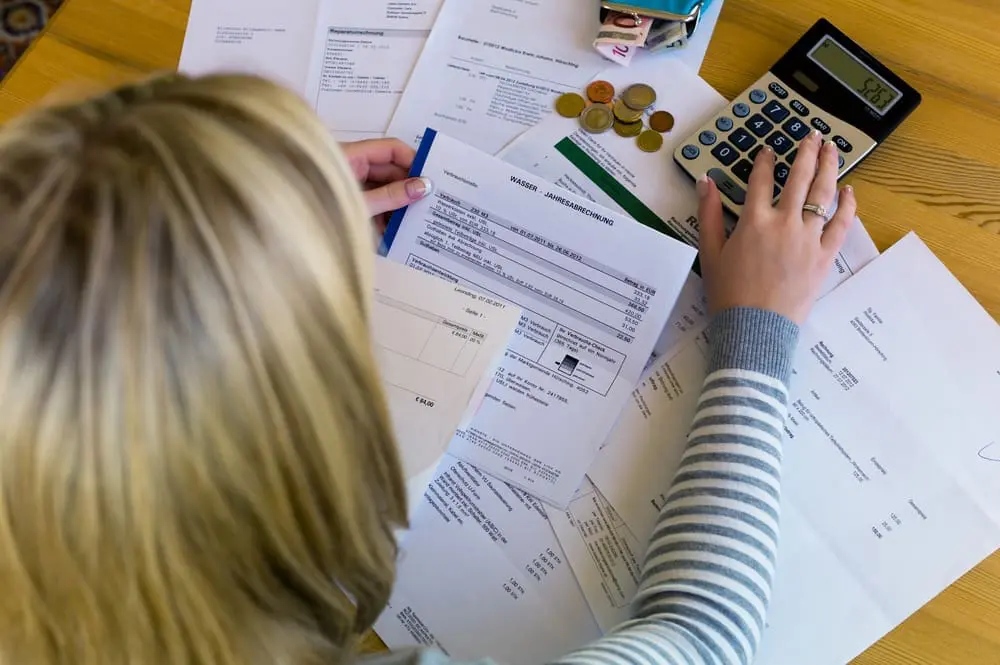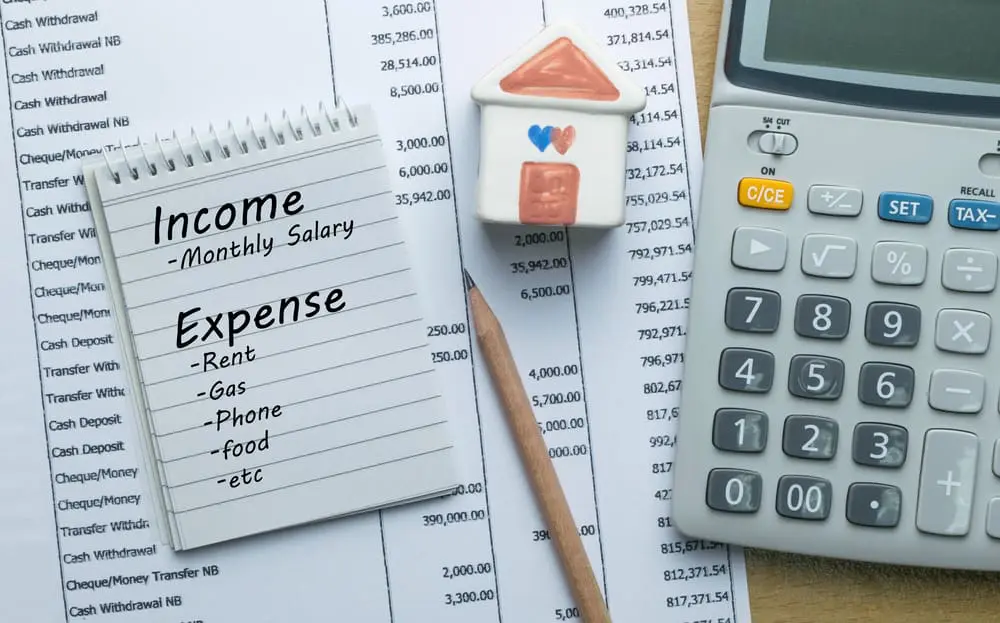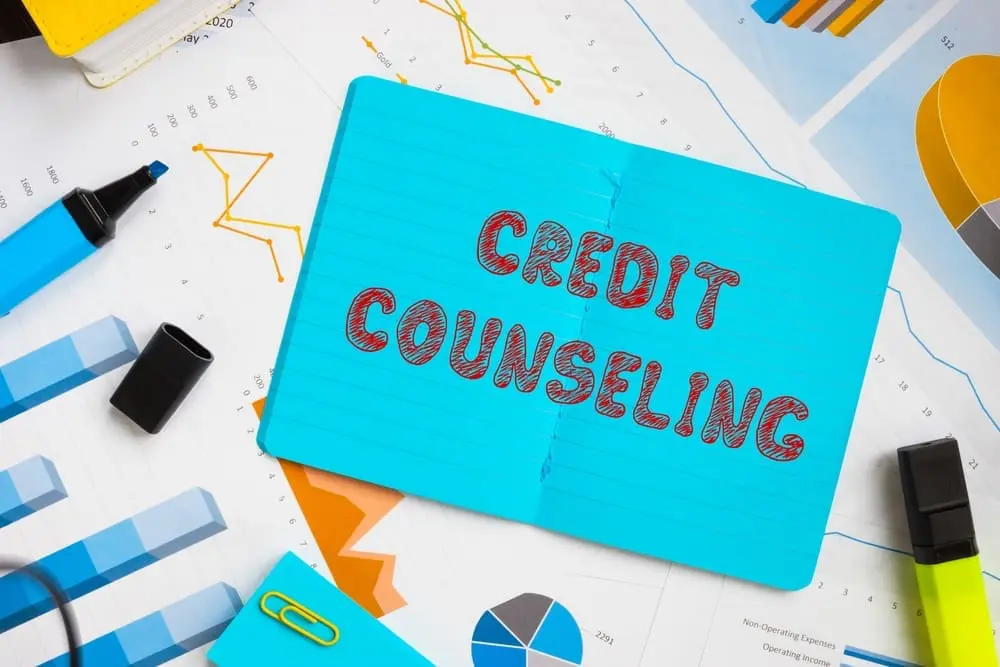Debt-Free Roadmap – Your Ultimate Guide to Crafting and Conquering Your Debt Repayment Journey. Find Out More In Our Latest Article!
THIS ARTICLE MAY CONTAIN AFFILIATE LINKS, MEANING I GET A COMMISSION IF YOU DECIDE TO MAKE A PURCHASE THROUGH MY LINKS AT NO COST TO YOU. PLEASE READ MY AFFILIATE DISCLOSURE FOR MORE INFO.
DON’T HAVE TIME TO READ THE FULL ARTICLE. HERE’S WHAT YOU ARE MISSING.
- Assessing Your Debt Situation
- Setting Realistic Goals
- Creating a Budget
- Choosing a Repayment Strategy
- Building an Emergency Fund
- Saving Strategies
- Cut Back on Expenses
- Emergency Fund Management
- Monitoring Progress and Staying Motivated
- Tracking Tools
- Reward Systems
- Handling Financial Setbacks
- Seeking Professional Advice
- Frequently Asked Questions
Embark on a transformative journey toward financial freedom with our comprehensive, step-by-step guide!
Create a personalized debt repayment plan that clears your obligations and empowers you to reclaim control over your finances. Together, we can achieve a debt-free future!
As someone who has personally struggled with debt, I know how overwhelming and stressful it can be to try to tackle it on your own. But with the right mindset, tools, and guidance, you can create a debt repayment plan that works for you and stick to it. In this guide, I will share actionable steps and real-life examples to help you become debt-free.
Assessing your debt situation is the first step in creating a repayment plan. This involves gathering information about your debt, including the amount owed, interest rates, and minimum payments. Then, you can set realistic goals based on your income and expenses. Creating a budget is crucial to understanding where your money goes and how much you can allocate toward monthly debt repayment.
Another crucial aspect of creating a debt repayment plan is choosing a repayment strategy. Several options exist, including the snowball, avalanche, meltdown, and debt consolidation. Finding a strategy that works for you and your financial situation is essential. Building an emergency fund and monitoring your progress are key components to staying on track with your debt repayment plan.
In this article
- Learn to assess your debt situation and set realistic goals based on your income and expenses.
- Choose a repayment strategy that works for you and your financial situation.
- Building an emergency fund and monitoring your progress is essential to staying on track with your debt repayment plan.
Assessing Your Debt Situation

Before creating a debt repayment plan, assessing your current financial situation is crucial. This will help you determine the amount of debt you owe, the interest rates associated with each debt, and which debts should be prioritized for repayment. Here are some steps to help you assess your debt situation:
Listing Your Debts
The first step is listing your debts, including credit card balances, personal loans, car loans, and other outstanding debts. Write down the creditor’s name, the total amount owed, the minimum monthly payment, and the interest rate associated with each debt. You can use a spreadsheet or a debt-tracking app to make this process easier.
Understanding Interest Rates
Once you have listed all of your debts, it’s essential to understand the interest rates associated with each debt. Interest rates can significantly impact your total debt and the time it takes to pay it off. Generally, debts with higher interest rates should be prioritized for repayment.
Prioritizing Repayment
After understanding the interest rates associated with each debt, it’s time to prioritize which debts to pay off first. One common strategy is to pay off the debt with the highest interest rate first while making minimum payments on all other debts. Once the highest-interest debt is paid off, move on to the debt with the next highest interest rate. This strategy is known as the debt avalanche method.
Another strategy is to pay off the debt with the smallest balance first while making minimum payments on all other debts. Once the smallest debt is paid off, move on to the debt with the next smallest balance. This strategy is known as the debt snowball method.
Assessing your debt situation is the first step toward creating a successful repayment plan. By listing your debts, understanding interest rates, and prioritizing repayment, you can make a plan tailored to your financial situation and goals.
Setting Realistic Goals

Creating a debt repayment plan can be overwhelming, but setting realistic goals can help you stay on track. Setting goals is essential to ensure they are achievable and measurable. Here are some tips to help you set realistic goals for your debt repayment plan:
Short-Term Milestones
Short-term milestones are smaller goals you can achieve in a shorter time. These milestones help you stay motivated and see progress in your debt repayment journey. Some examples of short-term milestones include:
- Paying off a credit card balance
- Making an extra payment towards a loan
- Negotiating a lower interest rate on a debt
Setting achievable short-term milestones can create momentum and build confidence in your ability to pay off your debt.
Long-Term Objectives
Long-term objectives are larger goals you can achieve over a longer period. These objectives help you stay focused on your ultimate goal of becoming debt-free. Some examples of long-term objectives include:
- Paying off all credit card debt
- Paying off a car loan
- Paying off a mortgage
When setting long-term objectives, it is essential to break them down into smaller, achievable milestones. This can help you stay motivated and see progress towards your ultimate goal.
Setting realistic goals is critical to creating and executing a successful debt repayment plan. Achievable short-term milestones and long-term objectives can help you stay motivated and on track to becoming debt-free.
Creating a Budget

Creating a budget is the first step in creating a debt repayment plan. Knowing how much money comes in and goes out each month is essential. By creating a budget, you can identify areas where you can reduce expenses and find extra money for debt repayment.
Income Analysis
The first step in creating a budget is analyzing your income. This includes all sources of income, such as salary, bonuses, and side hustles. You should also know your net income, the money you take home after taxes, and other deductions.
Once you have identified your net income, you can create a budget based on that amount. This will help you determine how much money you must put towards monthly debt repayment.
Reducing Expenses
Reducing expenses is the second step in creating a budget. This involves identifying areas where you can reduce spending to free up extra money for debt repayment. Some common areas where you can reduce expenses include:
- Eating out less often
- Cancelling subscription services
- Shopping for groceries on a budget
- Reducing utility bills by turning off lights and unplugging appliances when not in use
Reducing expenses can help you find extra money to put towards debt repayment each month. Every dollar counts, and even small savings can add up over time.
Creating a budget is an essential step in creating a debt repayment plan. You can find extra money each month to repay debt by analyzing your income and reducing expenses.
Choosing a Repayment Strategy

When it comes to paying off debt, there is no one-size-fits-all approach. However, there are two popular strategies that many people use to tackle their debt: the debt snowball method and the debt avalanche method.
Debt Snowball Method
The debt snowball method involves paying off your smallest debts first while making minimum payments on your more significant debts. Once the smallest debt is paid off, you move on to the next smallest debt, and so on. This method can be effective because it gives you a sense of accomplishment and motivation as you pay off each debt.
To use the debt snowball method, list all your debts, from smallest to largest. Then, focus on paying off the smallest debt first while making minimum payments on your other debts. Once the smallest debt is paid off, take the money you were paying toward that debt and apply it to the next smallest debt. Repeat this process until all your debts are paid off.
Debt Avalanche Method
The debt avalanche method involves paying off debts with the highest interest rates first while making minimum payments on other obligations. This method can be effective because it saves interest payments over time.
To use the debt avalanche method, list all your debts, from highest to lowest interest rates. Then, focus on paying off the debt with the highest interest rate first while making minimum payments on your other debts. Once the highest-interest debt is paid off, take the money you were paying toward it and apply it to the next highest-interest debt. Repeat this process until all your debts are paid off.
Debt Meltdown Method
The Debt Meltdown Method is a powerful strategy to help individuals rapidly pay off their debts. It combines three practical principles: paying the minimum balance, paying half of the minimum balance, and making monthly interest payments.
Depending on your preferences and financial situation, the debt snowball, debt avalanche, and debt meltdown methods can be effective. It is essential to choose a method that works best for you and your goals.
Consolidation and Refinancing Options
As I mentioned earlier, consolidating your debt can be wise if you have multiple high-interest debts. Here are two options to consider:
Debt Consolidation Loans
A debt consolidation loan is a personal loan used to pay off existing debts. By consolidating your debts, you’ll have just one monthly payment, simplifying your finances and saving you money on interest.
When shopping for a debt consolidation loan, look for a lower interest rate than what you currently pay on your debts. Ensure the loan term is long enough for a manageable monthly payment.
Balance Transfer Credit Cards
Another option for consolidating debt is to use a balance transfer credit card. With this card, you can transfer your existing credit card debts to a new card with a low or 0% introductory interest rate.
While a balance transfer card can be a great way to save money on interest, it’s essential to read the fine print. Ensure you understand the introductory rate, the balance transfer fee, and the interest rate after the introductory period ends.
Both debt consolidation loans and balance transfer credit cards can be practical tools for managing your debt. However, it’s essential to research and choose the right option for your financial situation.
Building an Emergency Fund

As I mentioned earlier, building an emergency fund is crucial to your debt repayment plan. The emergency fund acts as a buffer and helps you avoid using credit cards or loans in case of unexpected expenses. But how do you build an emergency fund? Here are some saving strategies and fund management tips to help you create a solid emergency fund.
Saving Strategies

Start Small
If you are starting from scratch, it’s best to start small. Aim to save at least $1,000 as a starter emergency fund. This may not seem like much, but it can help you cover small emergencies like car repairs or medical bills. Once you have paid off your debt, you can focus on building a fully-funded emergency fund.
Automate Your Savings
One of the easiest ways to save is to automate your savings. You can set up an automatic transfer from your checking account to your emergency fund savings account. This way, you won’t have to transfer money every month manually.
Cut Back on Expenses

Another way to save money is to reduce your expenses. You can start by reviewing your monthly expenses and identifying areas for savings. For instance, you can cancel unnecessary subscriptions or switch to a cheaper cable or phone plan.
Emergency Fund Management

Keep Your Emergency Fund Separate
Keeping your emergency fund separate from your checking account or other savings accounts is essential. This way, you won’t be tempted to use the money for other expenses.
Choose the Right Account
When choosing an account for your emergency fund, look for a high-yield savings account or a money market account. These accounts offer higher interest rates than traditional savings accounts, which means your money will grow faster.
Replenish Your Fund
Finally, it’s crucial to replenish your emergency fund after you use it. Make sure you have a plan to replenish the fund as soon as possible so that you are prepared for the next emergency.
Building an emergency fund takes time and effort, but it’s essential to your debt repayment plan. By following these saving strategies and fund management tips, you can create a solid emergency fund to help you stay on track and avoid debt.
Monitoring Progress and Staying Motivated

Creating a debt repayment plan is a great start, but sticking to it is where the real challenge lies. Tracking progress and celebrating small victories are essential for staying motivated. Here are some tools and reward systems that can help:
Tracking Tools

Tracking progress is crucial to staying motivated. It’s essential to see how far you’ve come and how much closer you are to reaching your goal. Here are some tools that can help:
- Debt payoff calculator: A debt payoff calculator can help you see how much interest you’ll save and how long it will take to pay off your debt. You can find free calculators online or use apps like Undebt.it or Debt Payoff Planner.
- Budgeting app: A budgeting app like YNAB can help you track your spending and stay on top of your finances. You can set up alerts for bills and track your progress toward your debt repayment goal.
- Spreadsheet: If you prefer a more hands-on approach, you can create a spreadsheet to track your progress. You can include columns for your debt balance, interest rate, minimum payment, and extra payment. You can also create charts to visualize your progress over time.
Reward Systems

Rewarding yourself along the way can help you stay motivated and focused on your goal. Here are some reward systems that can work:
- Small treats: Treat yourself to something small when you reach a milestone, like paying off a credit card or reaching a certain amount of debt paid off. It can be something as simple as a coffee or a movie rental.
- Debt-free celebration: Once you reach your debt-free goal, plan a big celebration. It can be a dinner with friends or a weekend getaway. The key is to make it something you’ll look forward to, and that will motivate you to keep going.
- Visual reminders: Create a visual reminder of your goal, like a debt repayment chart or a vision board. Put it somewhere you’ll see it every day, like your fridge or your desk. This will help you remember your goal and remind you why you’re working so hard to pay off your debt.
Tracking tools and reward systems can help you stay motivated and on track toward your debt-free goal. Remember to celebrate small victories along the way and keep your eye on the prize.
Handling Financial Setbacks

Dealing with financial setbacks is a common challenge when repaying debt. However, it’s important to remember that setbacks are a normal part of the process and don’t mean you’re failing. Instead, consider them opportunities to adjust and strengthen your plan.
Adjusting Your Plan
When you experience a financial setback, the first step is to take a deep breath and assess the situation. Look at your budget and see where to cut expenses or increase income. You may also want to contact creditors to negotiate a better payment plan.
Adjust your debt repayment plan accordingly once you understand your new financial situation better. This might mean extending your timeline or shifting your focus to paying off higher-interest debts first. Be flexible and willing to make necessary changes to keep yourself on track.
Seeking Professional Advice

If you’re struggling to handle a financial setback alone, don’t hesitate to seek professional advice. A financial advisor or credit counselor can help you navigate the situation and devise a plan that works for you.
When choosing a professional, look for someone with experience in debt repayment and a good reputation. Be prepared to share your financial information and be honest about your situation. With the proper guidance and support, you can overcome setbacks and stay on the path to becoming debt-free.
Remember, setbacks are a natural part of the debt repayment process. You can overcome any obstacle and achieve your financial goals with a solid plan and the right mindset.
Frequently Asked Questions
What are the initial steps to take when creating a debt repayment plan?
The first step in creating a debt repayment plan is to list all your debts, including the amount owed, interest rates, and minimum monthly payments. Once you have a clear picture of your debts, you can prioritize them based on interest rates or balances. You should also create a budget to determine how much you can allocate towards paying off your monthly debts.
How can I use Excel or Google Sheets to manage and track my debt repayment?
Excel or Google Sheets can be powerful tools for managing and tracking debt repayment progress. You can create a spreadsheet to track your debts, including the amount owed, interest rates, and minimum monthly payments. You can also use the spreadsheet to track your progress as you make payments and pay down your debts.
Can you provide a real-life example of a successful debt repayment strategy?
One real-life example of a successful debt repayment strategy is the debt snowball method. This method involves paying off your debts from smallest to largest, regardless of interest rates. By focusing on paying off your smallest debts first, you can gain momentum and motivation to continue paying off your larger debts.
What are the key components to include in a debt repayment plan template?
A debt repayment plan template should include a list of all your debts, including the amount owed, interest rates, and minimum monthly payments. It should also include a budget to determine how much you can allocate toward paying off your monthly debts. Additionally, it should consist of a timeline for paying off your debts and a plan for handling unexpected expenses or changes in your income.
How does a debt management plan differ from a self-structured debt repayment plan?
A debt management plan is a structured repayment plan typically set up by a credit counseling agency.
The agency negotiates with your creditors to lower your interest rates and monthly payments, and you make one monthly payment to the agency, which then distributes the payments to your creditors.
On the other hand, a self-structured debt repayment plan is a plan you create and manage yourself.
What are the top five strategies for effectively getting out of debt?
The top five strategies for effectively getting out of debt include creating a budget, prioritizing your debts, increasing your income, reducing expenses, and seeking professional help.
By creating a budget and prioritizing your debts, you can determine how much money you can allocate toward paying off your monthly debts.
Increasing your income and reducing expenses can help you save money to pay off your debts.
Finally, seeking professional help from a credit counselor or financial advisor can provide additional guidance and support as you work towards becoming debt-free.
Disclaimer: Millennial Credit Advisers is not a licensed credit service provider or financial advisor. We don’t offer credit repair, debt management, or legal services. Educate yourself on saving, reducing debt, and managing credit for economic improvement. Understand credit reports, scores, and financial products. Consult a financial advisor for personalized advice. Track your progress for a better credit journey.
Written content: Please view our full AI Use Disclosure.
We improve our products and advertising by using Microsoft Clarity to see how you use our website. By using our site, you agree that we and Microsoft can collect and use this data. Our privacy policy has more details.
















